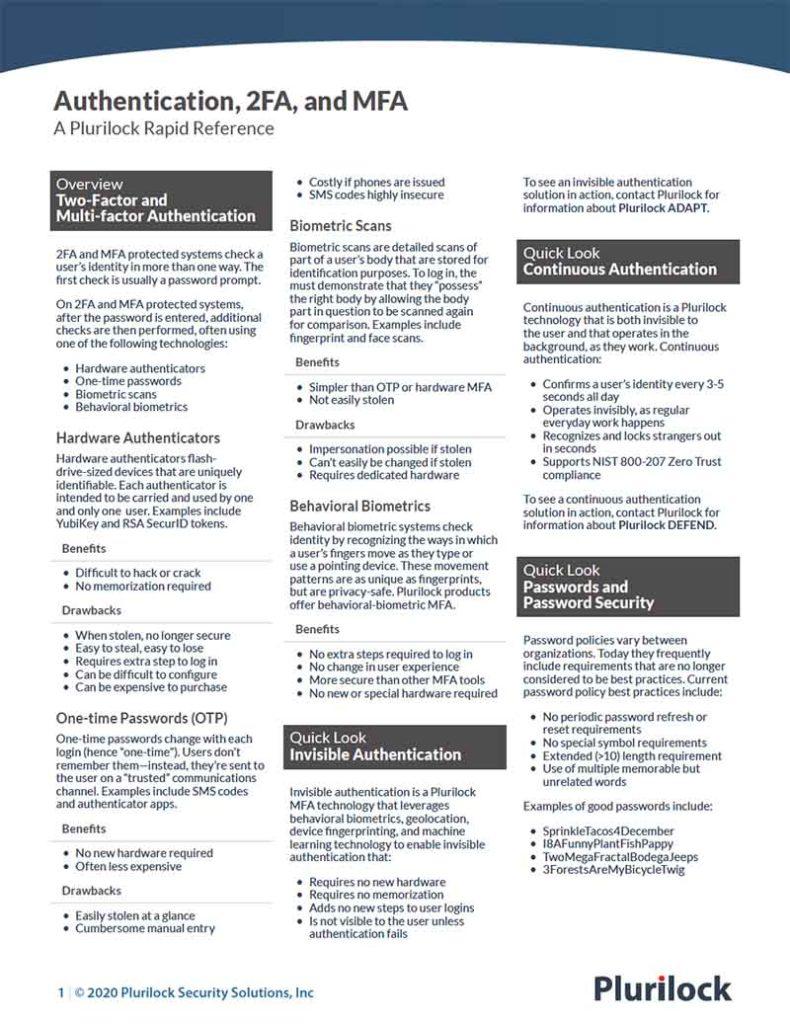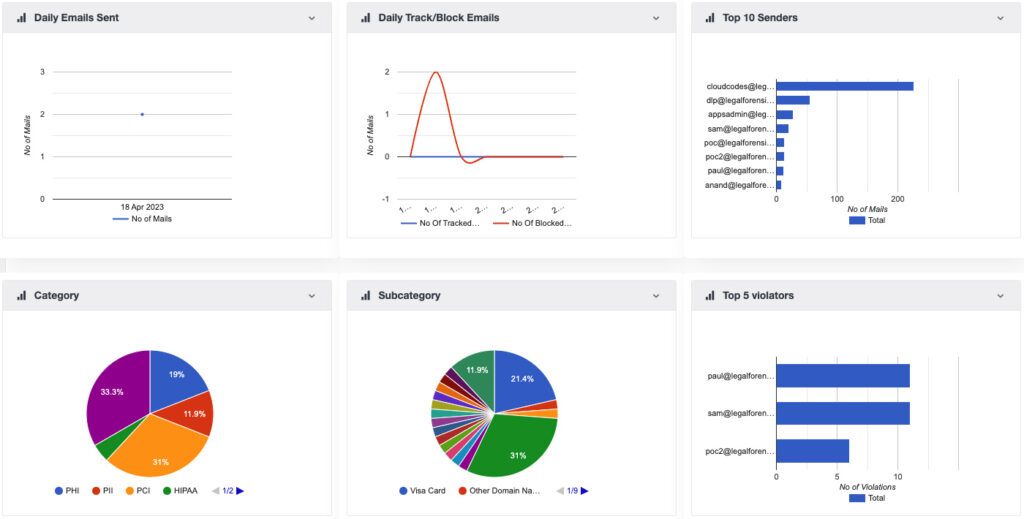Cybersecurity Reference > Glossary
If Plurilock analyzes pointer interaction, does Plurilock know the things I've clicked on, tapped on, or visited?
No. Plurilock does not use the actual contents of pointer input for authentication, but rather the characteristic times and patterns in pointer movement, accelerations, angles, and clicks.
This gesture and timing data is numeric, yet highly individualistic, and identifies users without relying on the links, buttons, widgets, or other on-screen elements that are meaningful to humans. For this reason, Plurilock is generally privacy-safe and does not "know" what you've clicked on.

2FA/MFA Rapid Reference
Authentication at a glance
Download the 2FA/MFA Rapid Reference now:
- 2FA and MFA basics and common solutions
- The benefits and drawbacks of each
- Glossary of authentication terms
2FA/MFA Rapid Reference
- 2FA and MFA basics and common solutions
- The benefits and drawbacks of each
- Glossary of authentication terms
Downloadable References
PDF
Sample Governance Policy for AI Use
Sample, shareable addition for employee handbook or company policy library to provide governance for employee AI use.
PDF
Establishing Guardrails for AI Whitepaper
Generative AI is exploding, but workplace governance is lagging. Use this whitepaper to help implement guardrails.
PDF
Practical Cybersecurity Cheat Sheet
Cheat sheet for basics to stay secure, their ideal deployment order, and steps to take in case of a breach.
PDF
Plurilock DEFEND™
Real-time, continuous authentication using behavioral biometrics and machine learning.















